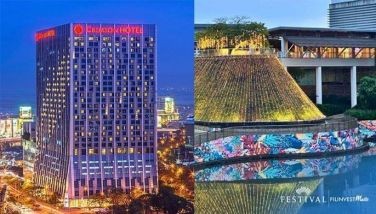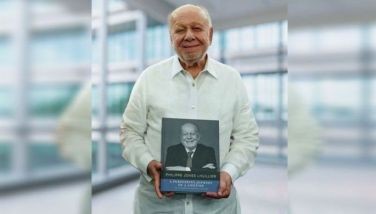Pasig River ferry service set for launch next month
November 13, 2006 | 12:00am
The Pasig River is poised to become a major commuter route once more as a new ferry service project starts plying the Manila-Marikina route by next month.
According to Narcissa Briones, project development officer of the Pasig River Rehabilitation Commission, the ferry ride is expected to be a cheaper and quicker alternative to land travel.
"The travel time from Napindan (Marikina) to Intramuros (Manila) will be reduced by 30 to 35 minutes," Briones told reporters during the Pasig River tour.
A soft launch is scheduled next month while full commercial operations will start June next year.
A total of 12 air-conditioned passenger- type ferries will ply the entire Manila to Marikina route. For the soft launch, two of the 150-capacity ferries will be ready to service commuters.
Briones said they expect an average of about 42,400 passengers to use the ferries daily. The ferry service will operate from 5 a.m. to 10 p.m.
The fare, Briones added, is relatively cheap at P2.25 per kilometer. Roughly, she said this translates to a P30 fee for the entire Marikina to Manila route.
The ferry will have 14 stations: Plaza Mexico, Escolta, Quezon Bridge, PUP, Sta. Ana, Lambingan Bridge, Valenzuela, Hulo, Guadalupe, San Joaquin, Napindan, Marcos Bridge, Riverbanks and Sta. Elena.
Briones pointed out that security measures in all the stations will be very strict because the ferry will pass by Malacanang Palace, the country’s seat of power.
"Passengers will pass through a metal detector," she noted. Also, she said the ticketing system of the ferry will be similar to those used by the Light Rail Transit (LRT) system.
Meanwhile, to ensure the safety of all passengers, Briones said each ferry will have a member of the Coast Guard on board the entire time. Furthermore, lifejackets will be provided to all commuters.
The Asian Development Bank (ADB) has helped finance the clean-up of the Pasig River in order to make it a conducive channel for transportation.
In a statement, ADB said it has released $176 million in financial assistance to help restore the environment and realize the river’s socioeconomic development potential.
The investment components include measures to relocate informal settlers, establish and develop 10-meter wide environmental protection areas along the riverbank, upgrade infrastructure, and eliminate illegal dumping of municipal solid waste into the river system.
According to Narcissa Briones, project development officer of the Pasig River Rehabilitation Commission, the ferry ride is expected to be a cheaper and quicker alternative to land travel.
"The travel time from Napindan (Marikina) to Intramuros (Manila) will be reduced by 30 to 35 minutes," Briones told reporters during the Pasig River tour.
A soft launch is scheduled next month while full commercial operations will start June next year.
A total of 12 air-conditioned passenger- type ferries will ply the entire Manila to Marikina route. For the soft launch, two of the 150-capacity ferries will be ready to service commuters.
Briones said they expect an average of about 42,400 passengers to use the ferries daily. The ferry service will operate from 5 a.m. to 10 p.m.
The fare, Briones added, is relatively cheap at P2.25 per kilometer. Roughly, she said this translates to a P30 fee for the entire Marikina to Manila route.
The ferry will have 14 stations: Plaza Mexico, Escolta, Quezon Bridge, PUP, Sta. Ana, Lambingan Bridge, Valenzuela, Hulo, Guadalupe, San Joaquin, Napindan, Marcos Bridge, Riverbanks and Sta. Elena.
Briones pointed out that security measures in all the stations will be very strict because the ferry will pass by Malacanang Palace, the country’s seat of power.
"Passengers will pass through a metal detector," she noted. Also, she said the ticketing system of the ferry will be similar to those used by the Light Rail Transit (LRT) system.
Meanwhile, to ensure the safety of all passengers, Briones said each ferry will have a member of the Coast Guard on board the entire time. Furthermore, lifejackets will be provided to all commuters.
The Asian Development Bank (ADB) has helped finance the clean-up of the Pasig River in order to make it a conducive channel for transportation.
In a statement, ADB said it has released $176 million in financial assistance to help restore the environment and realize the river’s socioeconomic development potential.
The investment components include measures to relocate informal settlers, establish and develop 10-meter wide environmental protection areas along the riverbank, upgrade infrastructure, and eliminate illegal dumping of municipal solid waste into the river system.
BrandSpace Articles
<
>
- Latest
- Trending
Trending
Latest
Trending
Latest
Recommended
November 23, 2024 - 12:00am


























